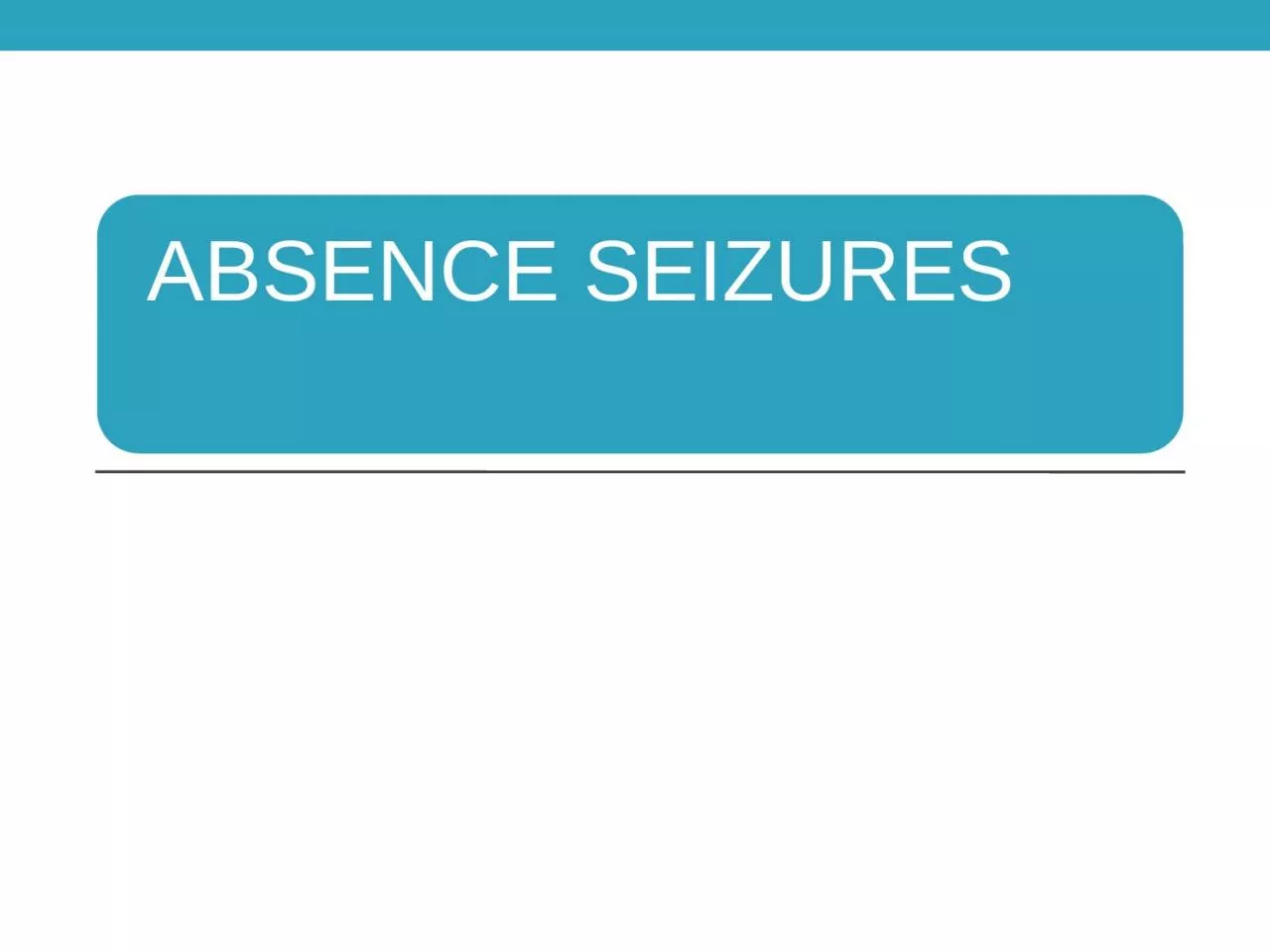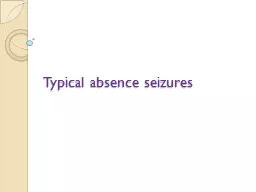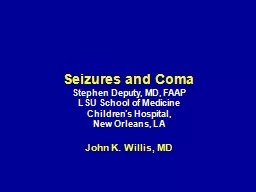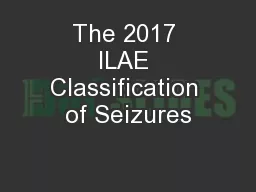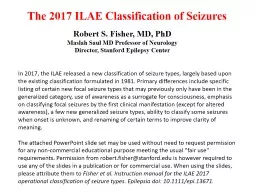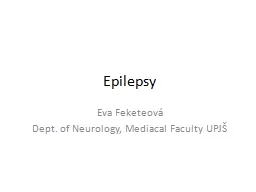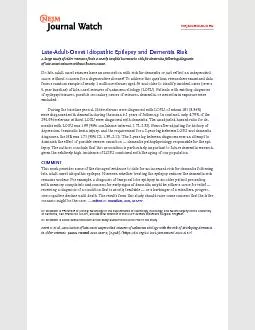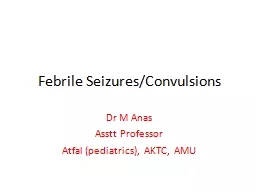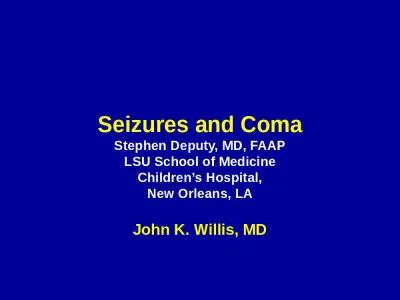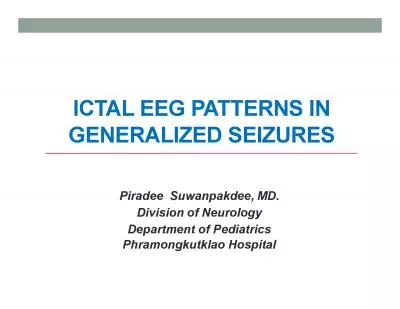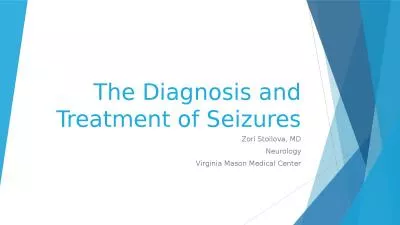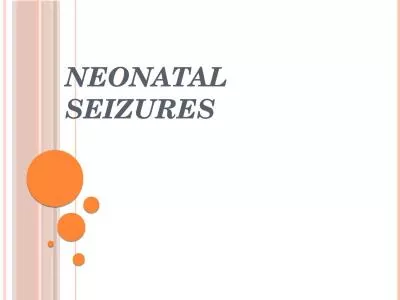PPT-age of onset :Typical absence seizures usually start at 5-8 yrs. of age.
Author : genevieve | Published Date : 2023-05-23
owing to their brevity overlooked by parents for many months even though they can occur up to 100s of times per day How to differentiate from complex partial
Presentation Embed Code
Download Presentation
Download Presentation The PPT/PDF document "age of onset :Typical absence seizures u..." is the property of its rightful owner. Permission is granted to download and print the materials on this website for personal, non-commercial use only, and to display it on your personal computer provided you do not modify the materials and that you retain all copyright notices contained in the materials. By downloading content from our website, you accept the terms of this agreement.
age of onset :Typical absence seizures usually start at 5-8 yrs. of age.: Transcript
Download Rules Of Document
"age of onset :Typical absence seizures usually start at 5-8 yrs. of age."The content belongs to its owner. You may download and print it for personal use, without modification, and keep all copyright notices. By downloading, you agree to these terms.
Related Documents

